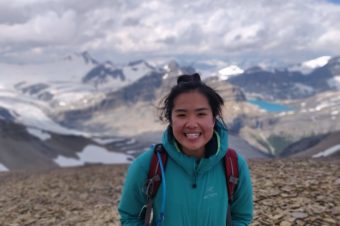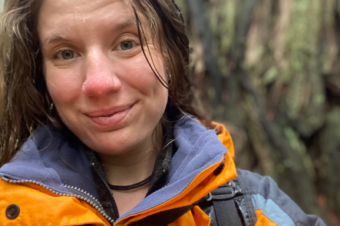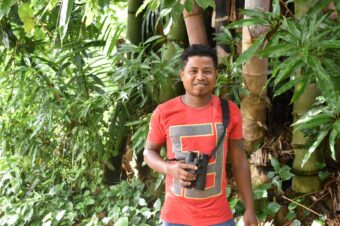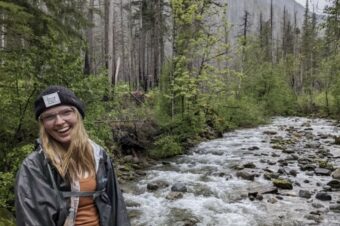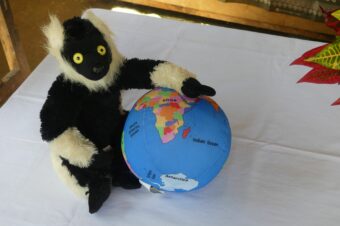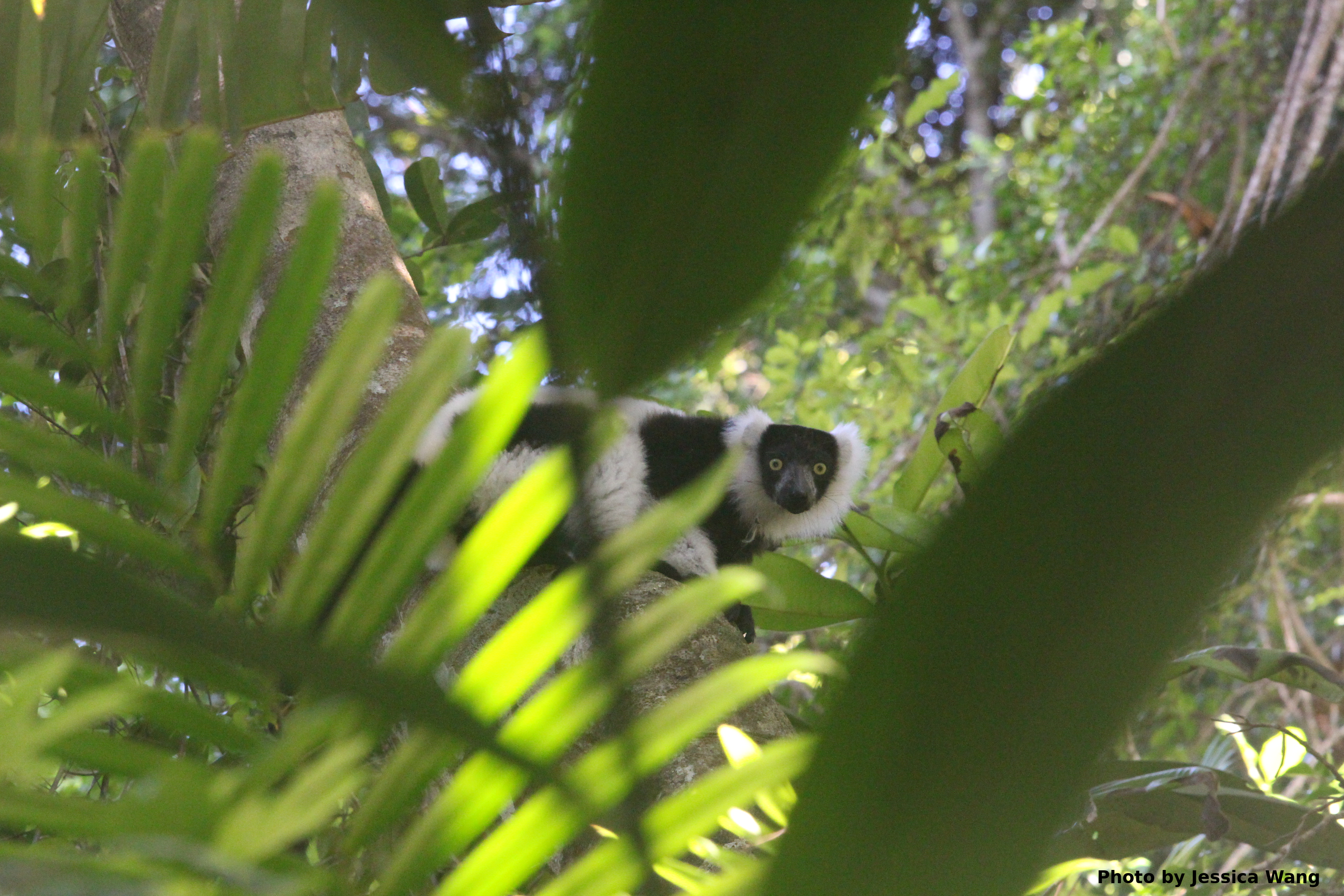
You may have heard of a circular economy, now let us introduce our concept of circular conservation. In 2021, we inaugurated three new interconnected programs at the Ihofa Vohitsara Bioreserve and Field Station near Torotorofotsy, Madagascar, that reinforce forest integrity. This area has dark green expanses of intact evergreen forest abutting mining concessions, tourist venues, villages, and agriculture. All this human activity sometimes spills over its legal boundaries, reducing habitat availability and increasing bushmeat pressure. The Critically Endangered black-and-white ruffed lemurs (Varecia variegata) are sensitive to disturbance and their absence in certain areas of the region have already been poignantly documented. With the support of IUCN Save Our Species, we launched three new efforts to promote healthy lemur populations and forests – black-and-white ruffed lemur monitoring, reforestation, and environmental mitigation.
The freshly minted black-and-white ruffed lemur monitoring team tracks this frugivore through the forest collecting data and poo. In a slick handoff, the poo goes to the reforestation team who extracts the seeds and sows them in the new plant nursery. The native trees grown from these seeds will then be planted at locations identified by the newly established mitigation team which documents illicit human activities including those that have resulted in deforested patches. As the trees are planted, the nursery will be restocked with more seeds of native trees “selected” by the black-and-white ruffed lemurs, one of the most well-known seed dispersers in Madagascar.
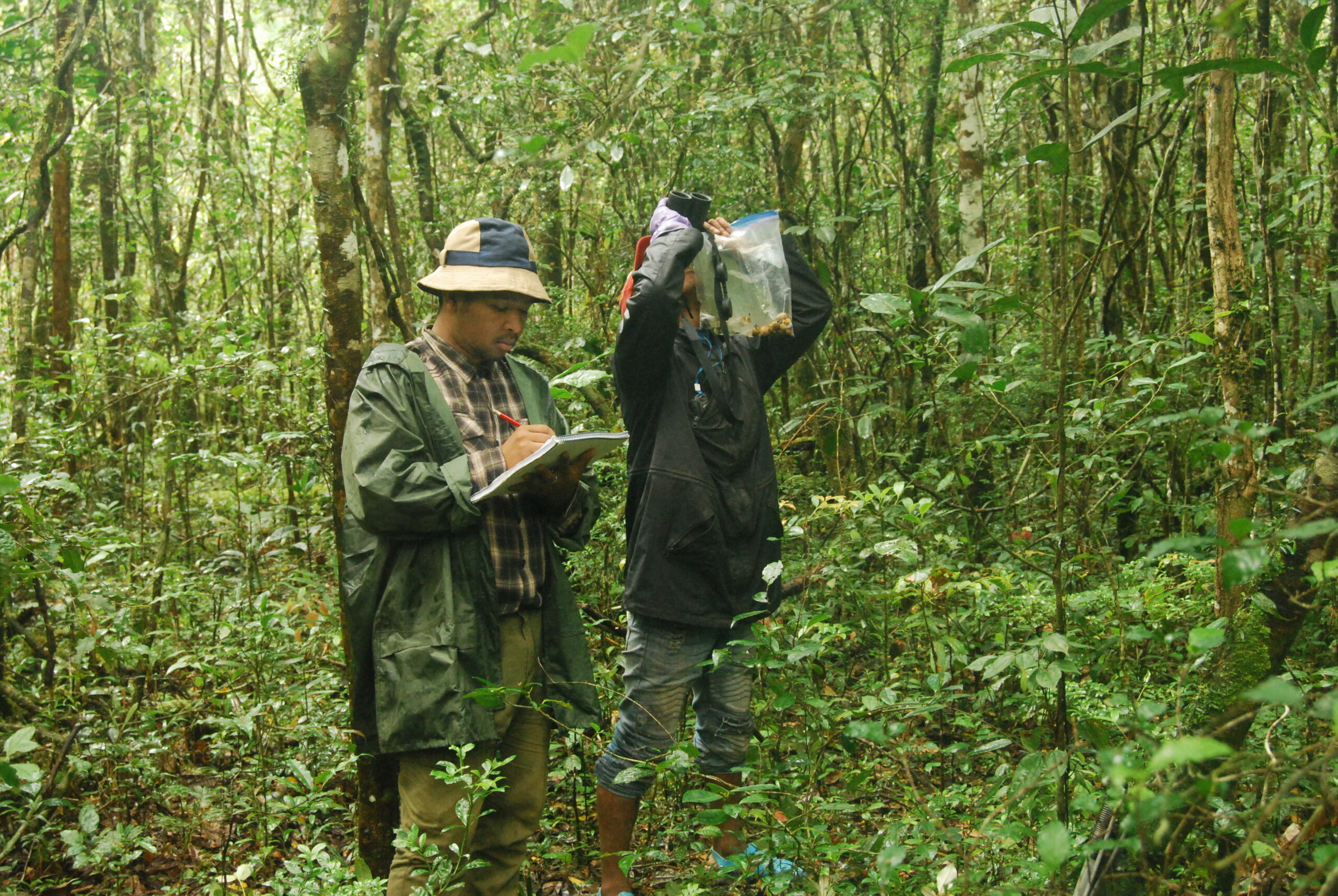

Additional products from this feedback loop include a detailed investigation on the relationship between black-and white ruffed lemurs and wetlands that is part of Toussaint RABARY’s PhD research. Wetlands in Madagascar are under intense pressure, including those in Torotorofotsy which are an international Ramsar site due to their role in supporting wildlife populations. Uncovering connections between black-and-white ruffed lemurs and this endangered ecosystem could provide new insight into wetland restoration.
The reforestation team, led by Jerome ROLLAND and Honoré RANDRIAMARONITINA, not only generate seedlings of native trees that are beneficial to wildlife but is also tasked with expanding the nursery’s inventory to include tree species that meet the needs of people. In addition to the efforts of the nursery staff, 20 women earn supplemental income by helping with reforestation tasks such as weeding, transplanting, and preparing compost. Our experiences with other communities have shown that these women often become advocates for conservation in their villages.
To expand the reforestation program’s species repertoire to include species important to people, the team will draw on the knowledge of Tolotra ANDRIAMANANTENA who is heading the new mitigation effort. Tolotra is a PhD student who surveys the forest for human activity. She is accumulating data on targeted habitat types as well as the most commonly extracted forest products. From this, she can deduce the resources and locations that are under the greatest pressure. Her data will be funneled to the VOI, a body of individuals elected from local communities that manages natural resource usage. Through collaborative dialogues, we can work with the VOI to explore solutions and kickstart conversation with nearby villages.
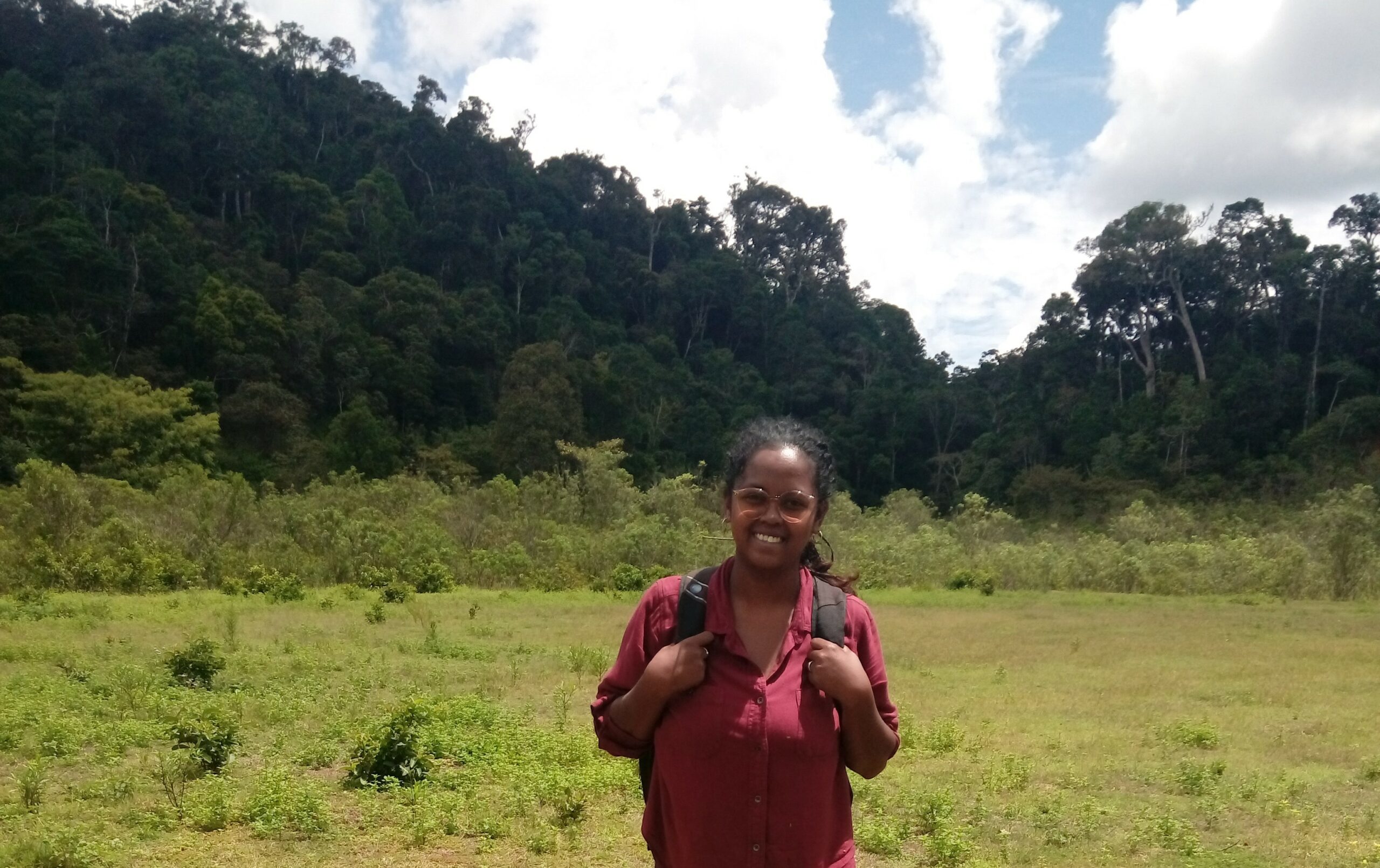
The synergy between the black-and white ruffed lemur monitoring, reforestation, and mitigation programs yields a holistic approach that bolsters community and wildlife resilience. Combined with our other lemur monitoring and ecotourism efforts, the Ihofa Vohitsara Bioreserve and Field Station can become an outpost for integrating active research with community outreach and economic development.

This publication was produced with the financial support of the European Union through IUCN Save Our Species. Its contents are the sole responsibility of Omaha’s Henry Doorly Zoo and Aquarium and do not necessarily reflect the views of IUCN or the European Union.
